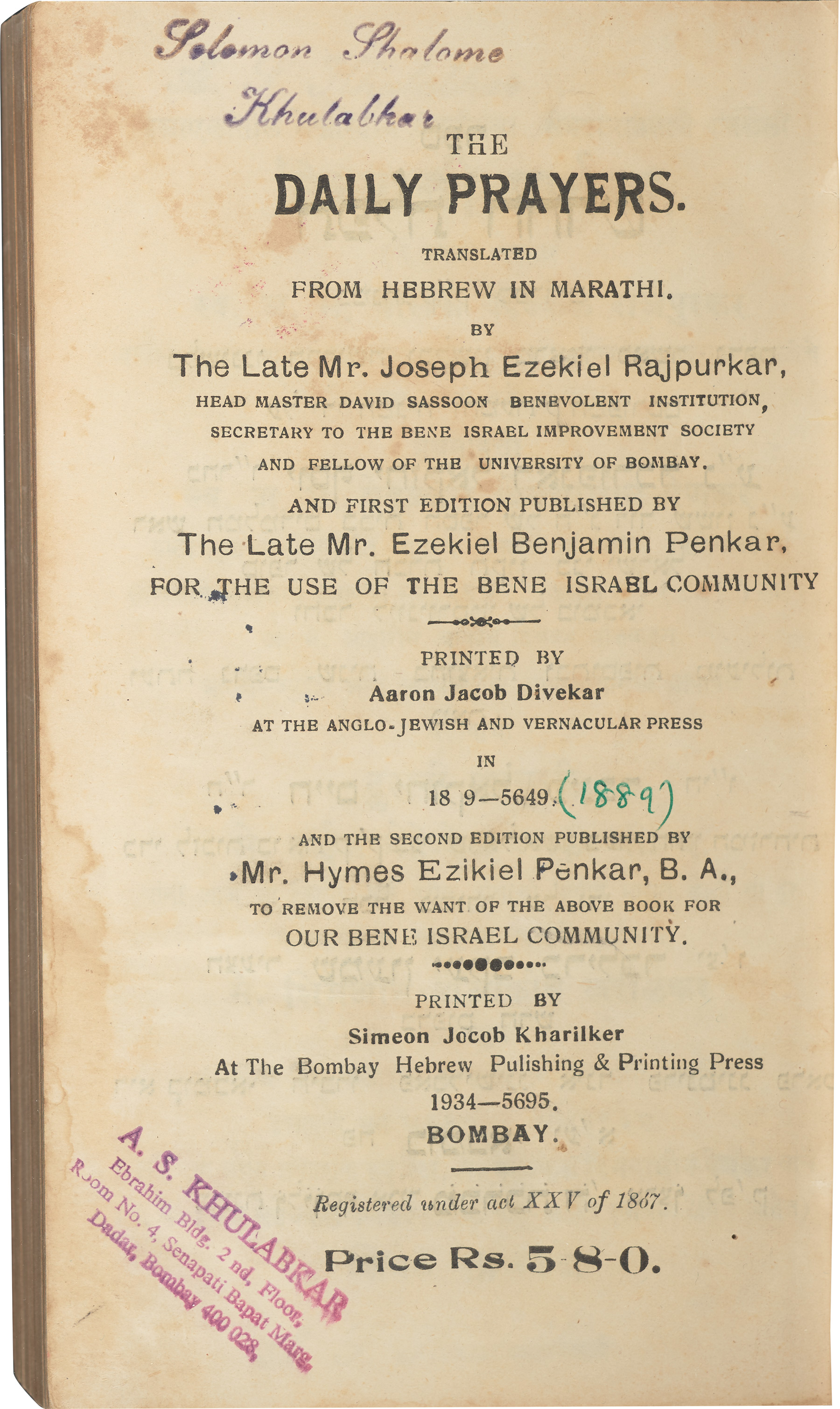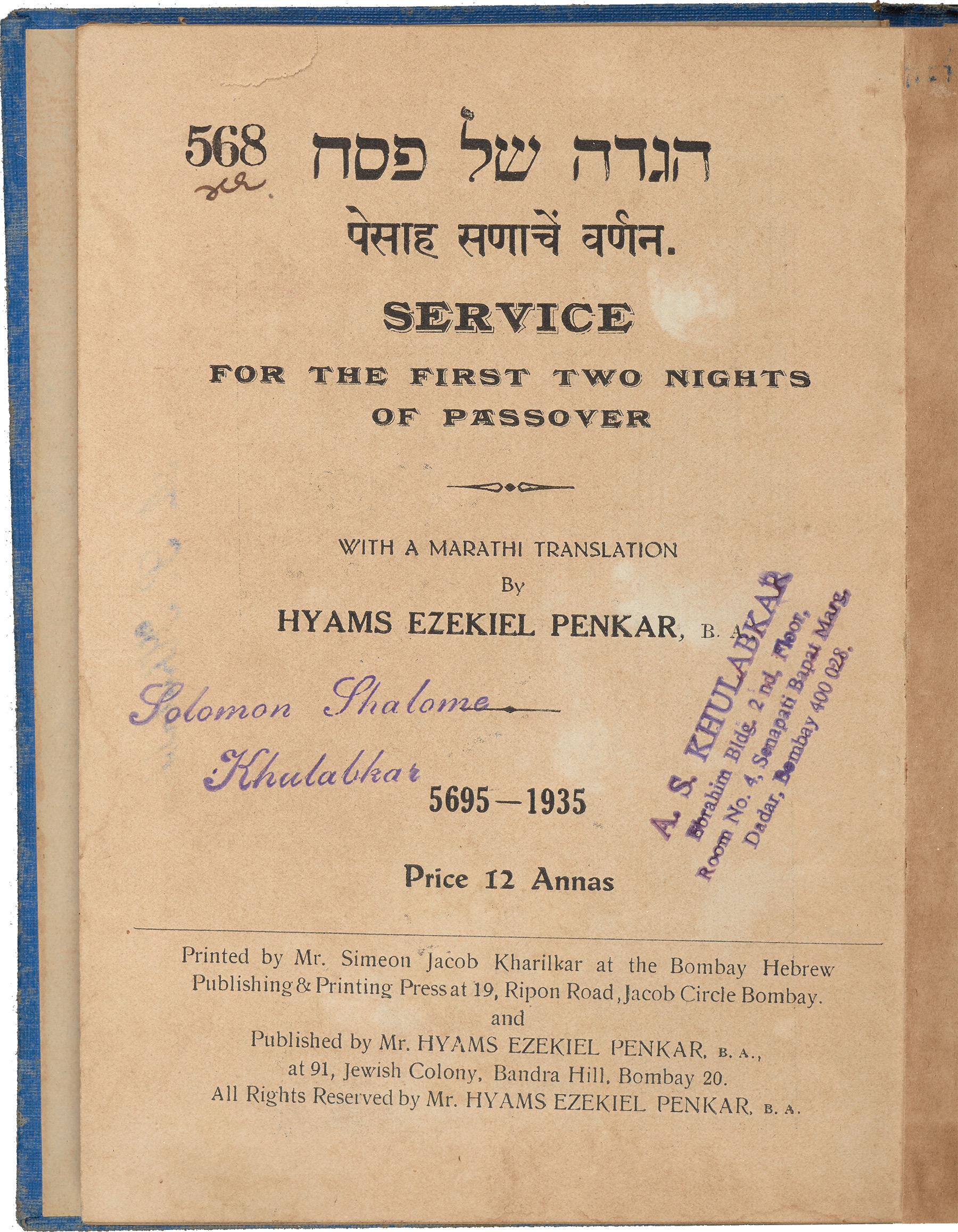fig. 1:
Joseph Ezekial Rajpurkar (1834-1905) translated this volume of daily (Siddur) prayers from its original Hebrew into Marathi, the language of his community -- the Bene Israel of India. This Jewish community is believed to be one of the ten Lost Tribes of the Kingdom of Israel. They arrived on the west coast of the Indian subcontinent sometime before the fall of the Second Temple in 70 C.E. Rajpurkar was motivated in his academic pursuits by a unique confluence of Bene Israel, Baghdadi Jewish and Christian influences.
He belonged to the few Bene Israel families devoted to the field of education at a time when many families looked to military service as a career. His father was superintendent of schools for the Free Church Mission (Anglican) in Bombay and Kolaba District (in the mainland just south of Bombay), that worked actively among the Bene Israel. Rajpurkar’s own school and college education proceeded under the tutelage of outstanding Anglican missionaries, which included the Rev. John Wilson, known for the keen interest he took in the education of the Bene Israel. Rev. Wilson wrote the foundational 'Rudiments of Hebrew Grammar in Marathi' (Bombay, 1831) to enable the Bene Israel to read the Old Testament.
As a product of an Anglican missionary education, a good working knowledge of Hebrew, and interactions with the orthodox Bombay Baghdadi Jews as headmaster of the David Sassoon Benevolent Institution for 40 years, Rajpurkar realized the discrepancies between the Christian interpretation and the Jewish one of certain passages of the Old Testament. He was determined to master Hebrew in order to study the original Hebrew liturgy himself.
This Siddur is one of twenty books (not all translations) that he published during his lifetime. Rajpurkar was also appointed in 1871 as Examiner of Hebrew at the University of Bombay.
This Siddur is a second edition. The first edition was published in 1889 during Rajpurkar's lifetime.
fig. 2:
This Marathi translation of the Pesah service for the first two nights of Passover, by Hyams Ezekiel Penkar, follows a rich mid-19th century tradition among the Bene Israel community of India of publishing translations of Hebrew liturgy in the spoken and written language of the community. The Bene Israel from the western Indian state of Maharashtra are considered, along with the Malabar Jews from the south-western Indian state of Kerala, as the oldest Jewish communities on the subcontinent.
The first Hebrew-Marathi Haggadah was published in Bombay as early as 1846 by a combined effort of a Cochin Jew, two Bene Israel and a Baghdadi Jew. Most Bene Israel translators were recipients of Anglican missionary school education, which gave them a foundation in Hebrew.

